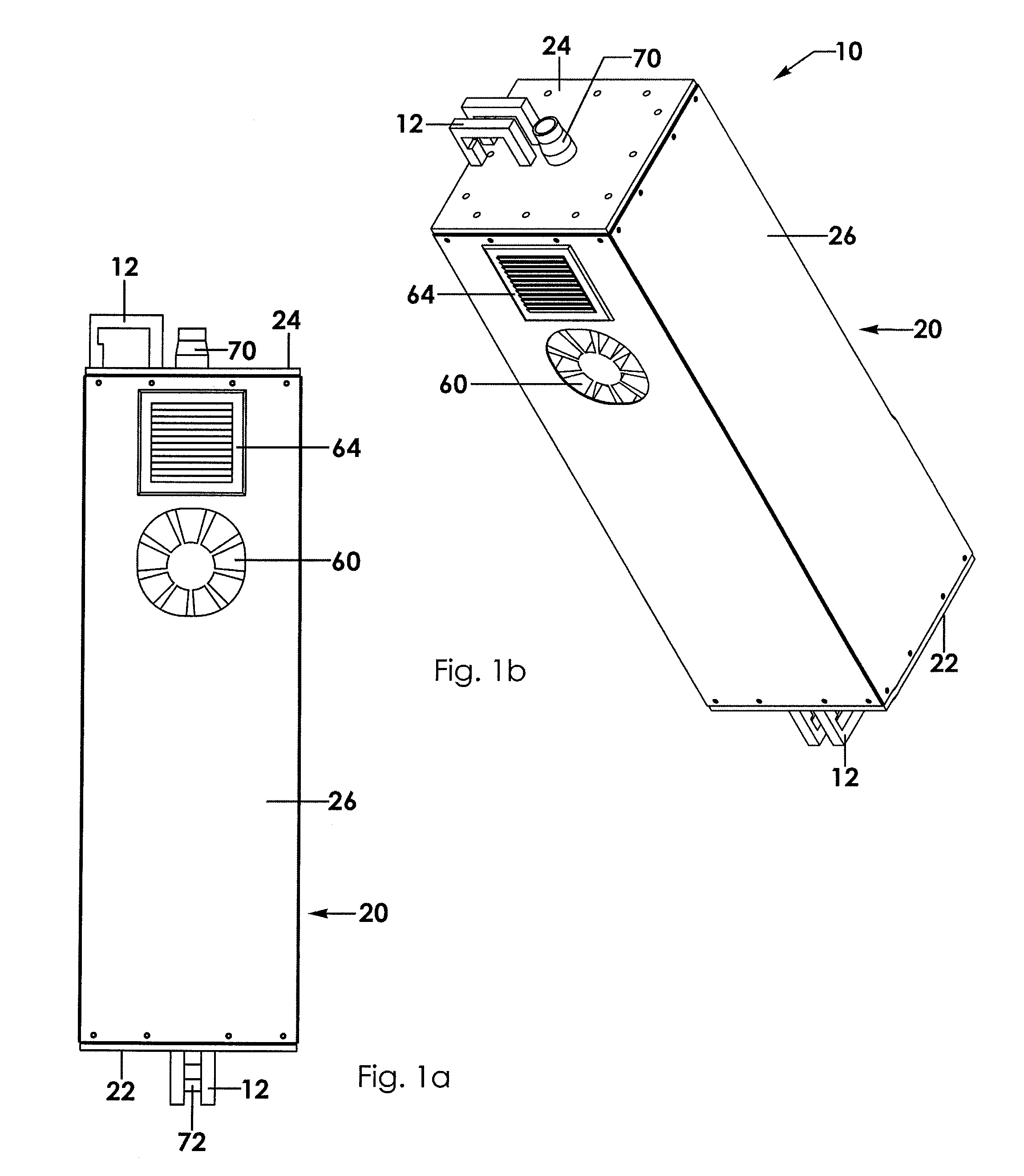Ultraviolate light sterilization apparatus
a technology of ultraviolet light and sterilization apparatus, which is applied in the direction of light therapy, other medical devices, and infections, can solve the problems of ineffective internal bacteria, viruses, and protozoa, and the inability of external microorganisms to reproduce, so as to prevent or reduce future infections
- Summary
- Abstract
- Description
- Claims
- Application Information
AI Technical Summary
Benefits of technology
Problems solved by technology
Method used
Image
Examples
Embodiment Construction
[0040]A sterilization apparatus according to a preferred embodiment of the present invention will now be described in detail with reference to FIGS. 1a to 14 of the accompanying drawings. The sterilization apparatus includes an outer housing 20, an inner housing 30, a plurality of ultraviolet (“UV”) light assemblies 50, and connections to upstream and downstream exhalation airflows to and from a medical patient.
[0041]The outer housing 20 includes a bottom wall 22 and an opposed top wall 24, each having a generally planar configuration. In an embodiment, a plurality of outer housing side walls 26 extends between corresponding peripheral edges of respective bottom and top walls. Together, the side, top, and bottom walls define an interior space, hereafter referred to as an outer chamber 28. The outer housing 20 may be sealed airtight except as otherwise noted below as ambient air will be routed through the outer housing 20. The top wall 24 and the bottom wall 22 of the outer housing 2...
PUM
| Property | Measurement | Unit |
|---|---|---|
| diameter | aaaaa | aaaaa |
| flow rate | aaaaa | aaaaa |
| transparent | aaaaa | aaaaa |
Abstract
Description
Claims
Application Information
 Login to View More
Login to View More - R&D
- Intellectual Property
- Life Sciences
- Materials
- Tech Scout
- Unparalleled Data Quality
- Higher Quality Content
- 60% Fewer Hallucinations
Browse by: Latest US Patents, China's latest patents, Technical Efficacy Thesaurus, Application Domain, Technology Topic, Popular Technical Reports.
© 2025 PatSnap. All rights reserved.Legal|Privacy policy|Modern Slavery Act Transparency Statement|Sitemap|About US| Contact US: help@patsnap.com



